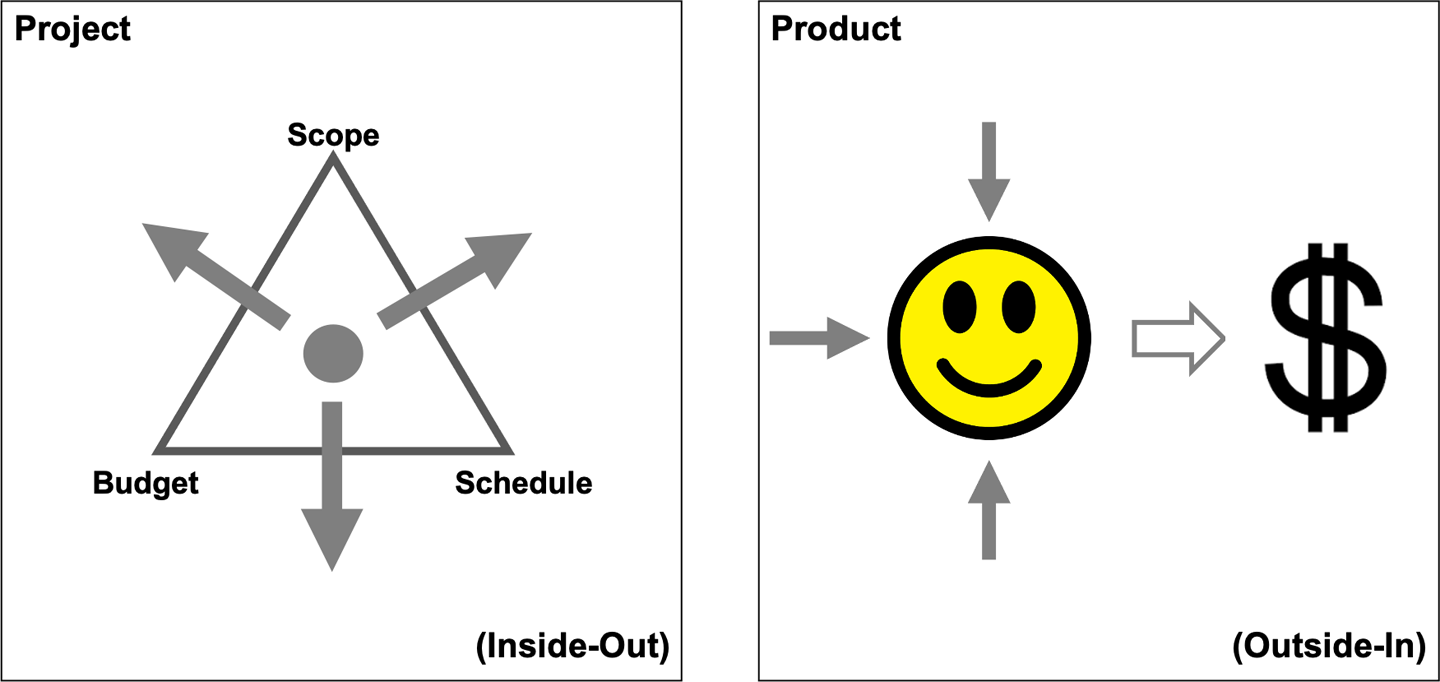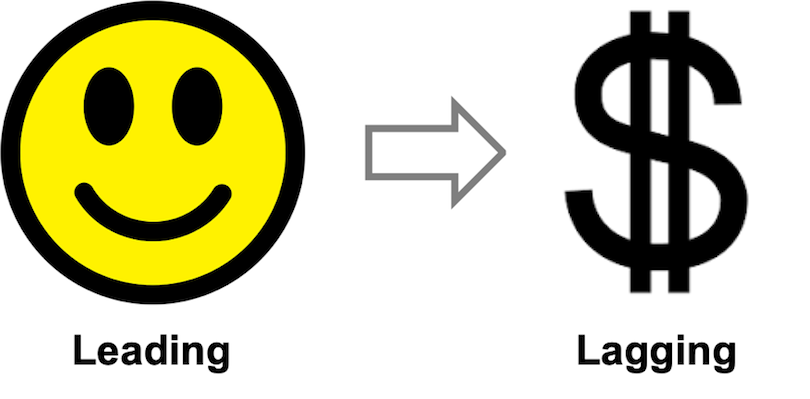Chapter 12. Successful Projects That...Fail
Ralph Jocham
& Don McGreal


Success is in the eye of the beholder, and depending on whether that beholder thinks in terms of projects or products, the measure of success could vary profoundly. A project is successful by being on scope, on time, and on budget, while a product is successful when it delivers value: happy customers, increased revenue, lower costs, and so on.
In the long run, what is more important for a company? A successful project or a successful product? The answer is rather obvious, as the product is what delivers actual value to customers. Peter Drucker, a prolific author and leader in management thinking, was very direct when stating in his book, The Practice of Management (HarperBusiness, 1954), “The only reason for management to exist is to create customers.”

Here we see the project management triangle, a well-known practice in project management, with the scope being a contract, the schedule a promise, and both being unified through one budget. In this “inside-out” approach, success is measured by internal elements that often drive how outside stakeholders will have to use the product, not always for the better.
On the other hand, a product has a clear focus on customer value. As Almquist, Senior, and Bloch point out in “The Elements of Value”, it can come in many shapes, whether it saves time, connects people, reduces anxiety, provides access, or motivates people.
This is clearly a different customer-first view based on continuous feedback with empirical product development and delivery. This is known as an “outside-in” approach, where success and progress are measured by outside elements that drive what a team does internally.
Understanding that the product mindset trumps a project mindset is only half the battle. Beneath layers of leadership and interconnected systems, teams and organizations may find it hard to even identify what their products are.
A product does not have to be a physical good—it can also be a service. As long as there is a producer (people doing the work) and a benefiting customer (people consuming the work), there is a product. In general, a product solves a customer’s need. This should be the leading motivator. If done well, the customer’s needs are met (happiness: leading) and they consume more of the product. Higher revenue and lower cost follow (profit: lagging).

To sum up, start by defining your product. Who are your customers and what are their needs? What value propositions do you offer that meet their needs? Form a hypothesis around this potential value and identify outside-in measurements that support it. Validate as progress is made, keeping in mind that moving the needle on these outside-in metrics is only possible with an actual release into the hands of the customer.
